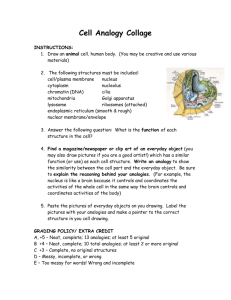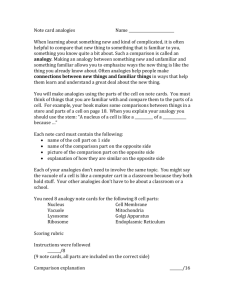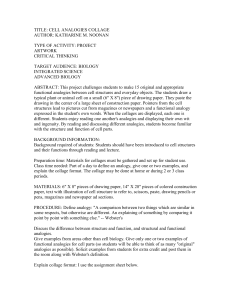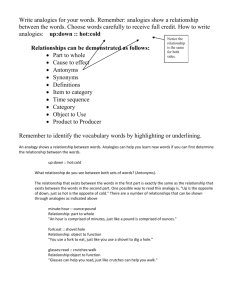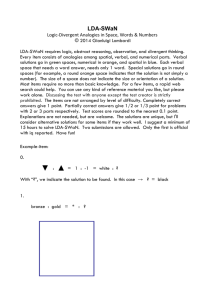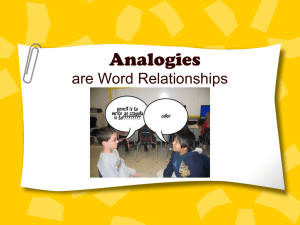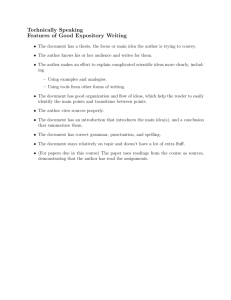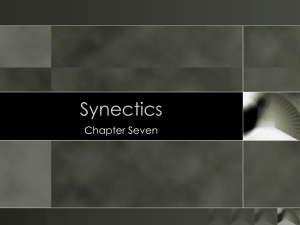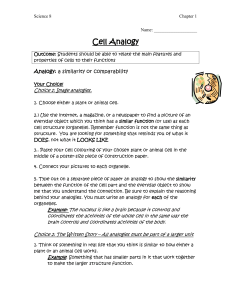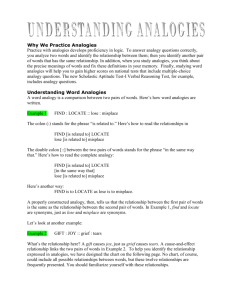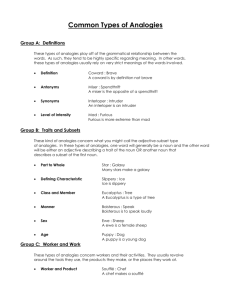Plant Cell Collage
advertisement
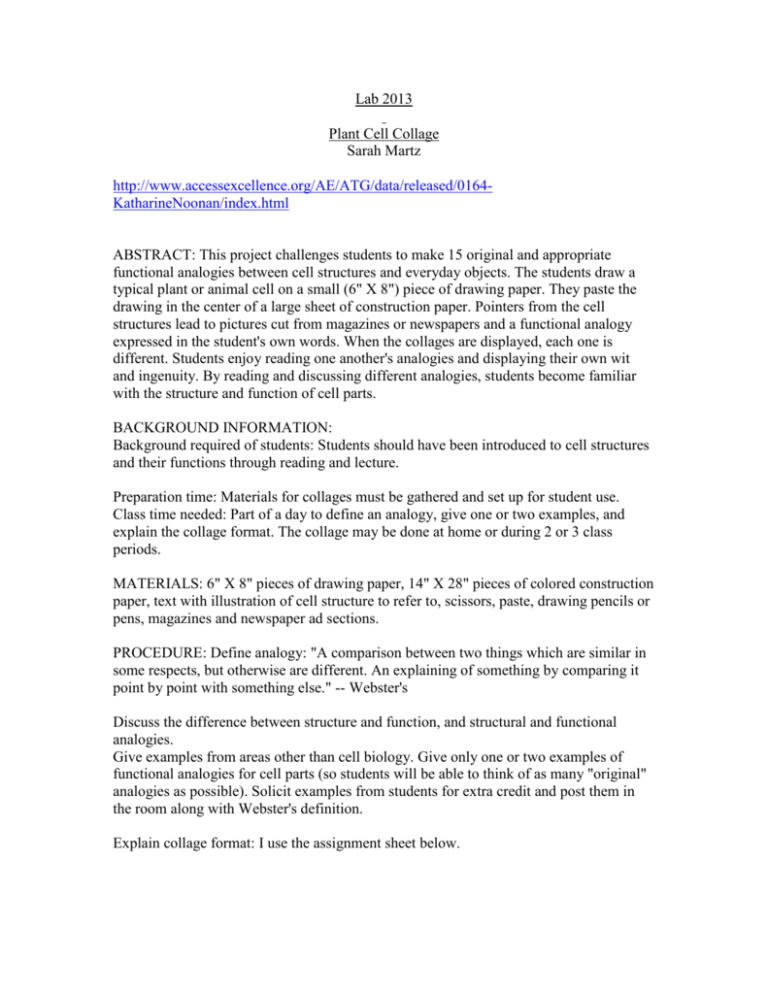
Lab 2013 Plant Cell Collage Sarah Martz http://www.accessexcellence.org/AE/ATG/data/released/0164KatharineNoonan/index.html ABSTRACT: This project challenges students to make 15 original and appropriate functional analogies between cell structures and everyday objects. The students draw a typical plant or animal cell on a small (6" X 8") piece of drawing paper. They paste the drawing in the center of a large sheet of construction paper. Pointers from the cell structures lead to pictures cut from magazines or newspapers and a functional analogy expressed in the student's own words. When the collages are displayed, each one is different. Students enjoy reading one another's analogies and displaying their own wit and ingenuity. By reading and discussing different analogies, students become familiar with the structure and function of cell parts. BACKGROUND INFORMATION: Background required of students: Students should have been introduced to cell structures and their functions through reading and lecture. Preparation time: Materials for collages must be gathered and set up for student use. Class time needed: Part of a day to define an analogy, give one or two examples, and explain the collage format. The collage may be done at home or during 2 or 3 class periods. MATERIALS: 6" X 8" pieces of drawing paper, 14" X 28" pieces of colored construction paper, text with illustration of cell structure to refer to, scissors, paste, drawing pencils or pens, magazines and newspaper ad sections. PROCEDURE: Define analogy: "A comparison between two things which are similar in some respects, but otherwise are different. An explaining of something by comparing it point by point with something else." -- Webster's Discuss the difference between structure and function, and structural and functional analogies. Give examples from areas other than cell biology. Give only one or two examples of functional analogies for cell parts (so students will be able to think of as many "original" analogies as possible). Solicit examples from students for extra credit and post them in the room along with Webster's definition. Explain collage format: I use the assignment sheet below. 1. Draw a plant or animal cell in pencil on 6" X 8" white paper. Include the following structures: BASIC TEN EXTRA CREDIT cell or plasma membrane cell wall cytoplasm chloroplast chromatin centriole nucleus cytoskeleton nucleolus cilia mitochondrion flagellum Golgi apparatus lysosome ribosome vacuole endoplasmic reticulum * Check with me about other nuclear envelope EC structures 2. Correctly identify your cell as a plant cell or an animal cell. 3. Find out the function (or main job) each structure has in the cell. (Read your book, check the glossary, color sheets, and class notes.) 4. Find a magazine or newspaper picture of an everyday object which has a similar function (or use) as each cell structure. Write an analogy to show the similarity between the cell part and the everyday object. Be sure to explain the reasoning behind your analogies. ( The nucleus is like a brain because it controls and coordinates the activities of the whole cell in the same way the brain controls and coordinates activities of the body.) 5. Paste your cell drawing in the middle of a poster-size piece of construction paper. 6. Paste the pictures of everyday objects at the edges of the construction paper paper. Label the pictures with your neatly written analogies and make a pointer to the correct structure in your cell drawing.
